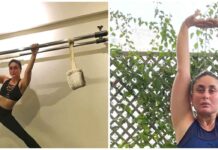Before getting into the concept of Muscle Cramps, let us first understand the basics of our body and how it works?
Our whole structure of the body is covered with muscles, which is collectively known as the Muscular System. Muscles are tissues that can track to facilitate the movement of our bodies. They give the Body Shape and beauty, they protect different parts of the body, they keep the joints at the right place and they provide movement in the body.
Voluntary or skeletal muscles such muscles are connected with the bones and can be contracted or expanded as desired leading to movement in the connected parts of the body, these muscles are found in the neck, shoulder, chest, back hips, etc.
Involuntary or visceral muscles cannot be contracted or expanded whenever we desire. They are connected within solid internal parts like the lungs, liver, spleen thickness, etc. or most of the internal organs like stomach and the intestine, they are in the skin and wall of blood vessels.
Cardiac muscles this is found in the wall of the heart, we have no control over it. This is a unique muscle that works without rest continuously for 24 hours contracting and diastolic for the whole life span.
To keep muscle strong and young, the muscles must be made to work; if muscles are inactive then gradually toxins will get collected and take the shape of a disease.
Now with the above knowledge, it will be very clear to understand the muscle cramps. It has a voluntary connection to our bodies. When we use the voluntary muscles, such as those of our arms and legs, they contract and relax alternatively as we move our limbs. Muscles that support our head, neck, and trunk contract similarly in a harmonized fashion to maintain our posture. When a muscle contracts forcefully then it is a “spasm.” If the spasm is forceful and sustained, it becomes a cramp. Muscle cramps often cause a visible hardening of the muscles.
Muscle cramps last from a few seconds to a 15 min. and maximum to an hour or occasionally longer. It is quite common for a cramp to occur multiple times until it finally resolves. The muscle cramps may involve a part of a muscle, the entire muscle, or several muscles that usually act together, such as those that bend adjacent fingers. Some cramps involve the synchronized contraction of muscles that normally move body parts in opposite directions.
Muscle Cramps are extremely common and almost everyone might have experienced it. Muscle cramps are very common in adults and increases frequently with age. However, children also experience muscle cramps.
It is simple to know any of the muscles that are under our voluntary control (skeletal muscles) can cramp. Cramps of the periphery, especially the legs and feet and most particularly the calf muscles are very common. Various organs working involuntary, like the muscles of the (uterus, blood vessel wall, bowels, bile and urine passages, bronchial tree, etc.) can also suffer from cramps but here we will be talking only of the cramps of skeletal muscle (voluntary muscles).
Causes of Muscle Cramps
- When the exercises are done without proper warming up then the muscles can lead to cramps.
- It can also occur when a muscle is not able to relax
- The deficiency of magnesium or potassium in the diet leads to muscle cramps.
- When the muscles become aggravated by the production of lactic acid (usually happens if one doesn’t rest after a lot of work out).
- Dehydration can worsen the problems of muscle cramps. Kale says, older people often don’t drink enough water at night because they want to avoid not getting up at night for a nature call, so end up with not having water.
- Reduction in the blood flow to the muscles can also cause muscle cramps. This happens due to the narrowing of the arteries in legs called atherosclerosis.
- Kale said it can also happen in the winter season, due to cold weather, the blood vessels can constrict.
- Some neurological conditions (such as Parkinson’s disease, neuropathy, or spine problems could compress nerves in the low back) can cause cramps as well.
- Even common foot problems, such as flat arches, can cause muscle cramps.
- Muscle cramps sometimes result from certain medications, like diuretics Kale said, these medicines can cause both dehydration and mineral imbalances.
Relief from Muscle Cramps
- Some stretches done can provide quick relief when cramps come.
- Sit up on the bed, tie a blanket around the foot, and gently pull toes toward yourself by keeping the knee straight.
- For cramps in the front of the lower leg, just stand up at the side of the bed, put self-weight on the toes, and then lift heels; this gently stretches the cramped muscles.
- For back cramps, make the “Balasana” yoga posture.
- For hamstring cramps (in the back of the thigh), sit on the floor with legs extended in front. Slide hands down the legs until one feels a burning sensation in the cramped muscle. Hold for 30 seconds, and then slowly return to a sitting position.
- After one has stretched the muscle, put a heating pad on the area to promote blood flow and then gently massage the muscles.
Muscle Cramps Prevention
- Kale suggested staying hydrated throughout the day, eating foods rich in magnesium (especially leafy greens) and potassium (bananas, black beans), wearing warm socks at night if you have leg cramps, and keeping your muscles strong and flexible with regular exercises.
- Muscle cramps are extremely painful when they occur, but it is not a sign of serious illness. Stretch the muscle and resume your activity once the cramp goes away.
- Sit in vajrasana, then, without moving buttocks, with exhaling lower forehead to the floor and extend arms in front, hands on the floor. Hold for a few moments, and then inhale as you come back up.
“Eat More of Green Vegetables and Remain Hydrated”

























